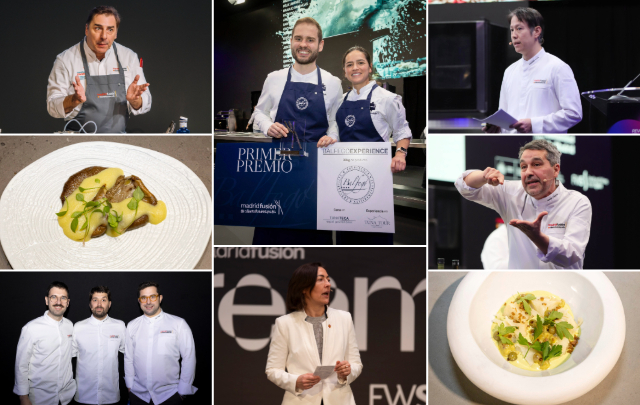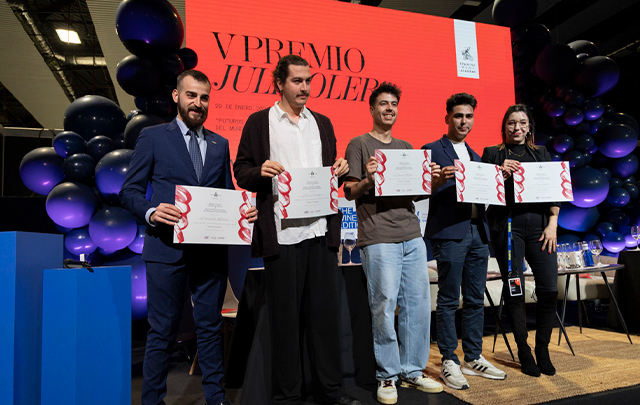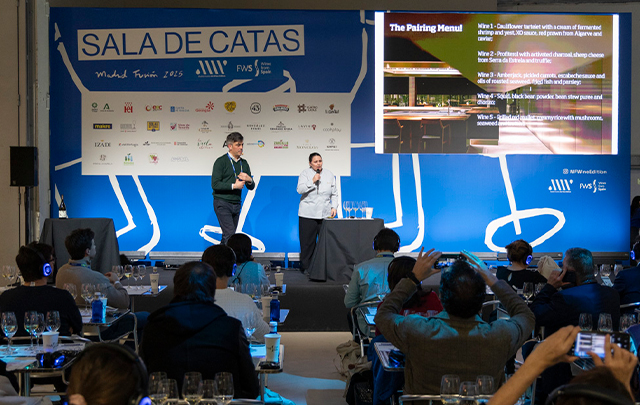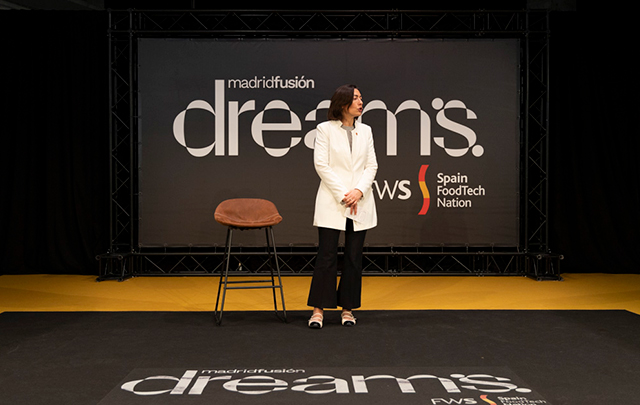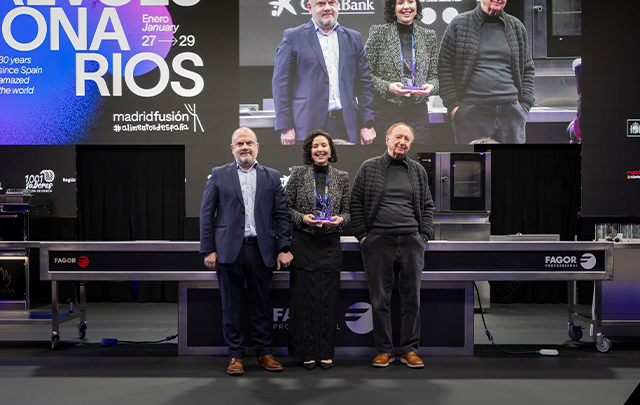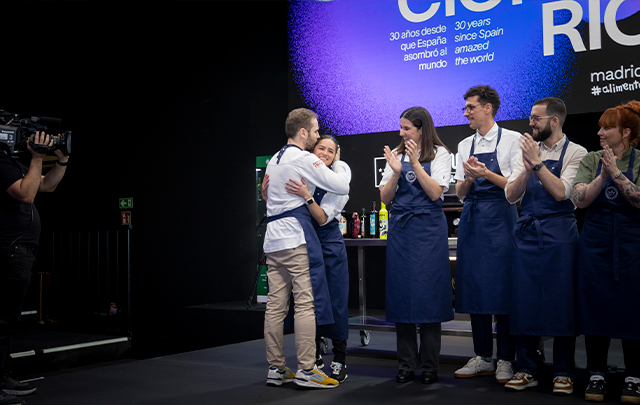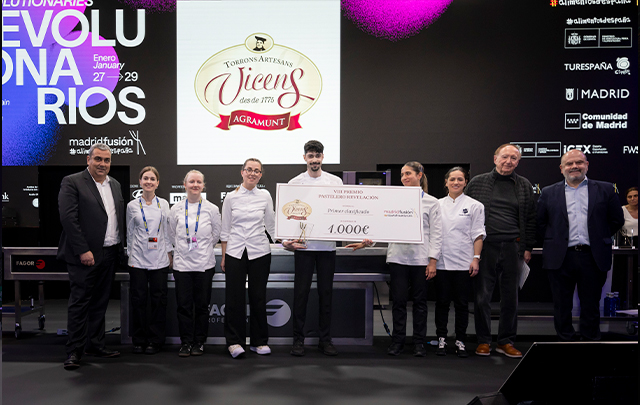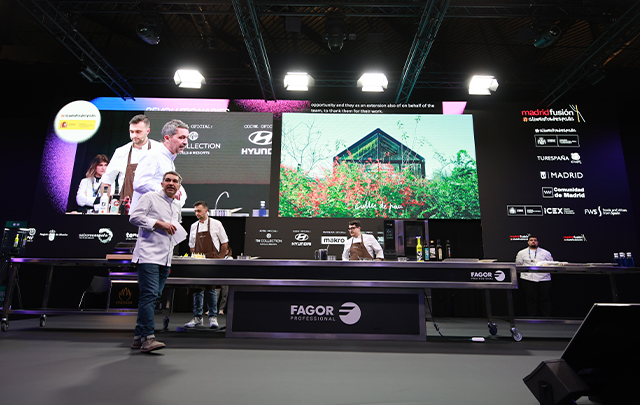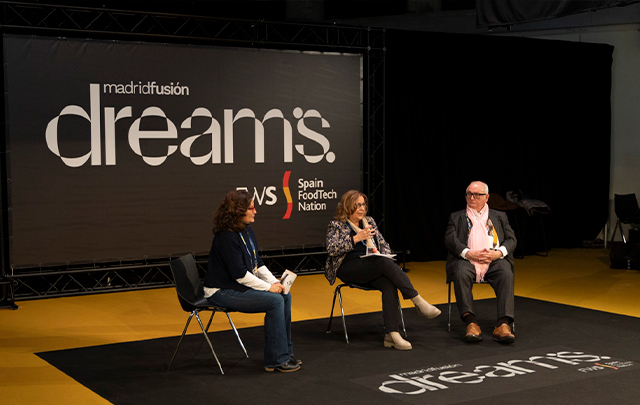News
Caviar, a luxury item democratized for every menu

This boom in caviar consumption has not reached the domestic sphere, even though it is an item that has seen a significant drop in price in the last decade
Is caviar an ingredient or a garnish? It is a debate that has come with the democratization of caviar, which is now consumed in most high-end restaurants, whereas before, and not many years ago, it was considered a luxury item. But only Rafa Zafra, chef at Estimar, Arnau Subías, scientific director at GastroBio, Juanjo López, chef at La Tasquita, Ignacio Medina, gastronomic journalist, and David Montalbán, brand ambassador for Caviar de Riofrío, found common ground during the roundtable discussion at Madrid Fusion.
This skyrocketing consumption of caviar has not reached the domestic sphere, despite the fact that in the last decade it is a product that has seen a significant drop in price, greatly democratizing access to an element that some use to accompany other products and others, on the contrary, consider a sin to mix it with any other flavor.
"There is a lack of respect for caviar when it is mixed with other products. I eat caviar by itself," said food journalist Ignacio Medina during a conversation in which chef Juanjo, who had a dish of kidneys with caviar on his menu, said that he was gradually eliminating caviar from his menu because it provides a "salty element" like an anchovy, relegating caviar to a secondary role and using it as a "luxury salt. Zafra, the chef at Estimar, disagrees. He uses caviar as just another ingredient in a dish, helping to add some fun touches. "I'm one of the few chefs who cooks the way he likes to eat, so I add caviar to something to improve the dish," he said, defending a product that has undergone many price fluctuations throughout its history, partly due to the disappearance of sturgeon, the main source of caviar.
It was precisely this fact that led to the aquaculture production of sturgeons, with more sturgeon and caviar being bred and produced in 15 years than in the entire 20th century. An industry that was created when sturgeon fishing was banned in 2004, so industry and humans created animals in unpredictable ways. Nevertheless, what makes caviar such an expensive product, according to GastroBio's scientific director, Arnau Subías, is the maturation of the sturgeon. "The price depends on the number of years it takes for the sturgeon to reach sexual maturity, that is, to produce caviar. The longer it takes, the higher the price of caviar.
Be that as it may, a common ground has also been reached with the use and increasing accessibility of caviar on restaurant menus. And the fact is that few people, very few, know exactly the characteristics of the caviar they are eating. Unlike wines, for example, caviar's origin, its years of maturation, where it comes from, are unknown... "You have to find out about caviar," said the speakers about a product that has become popular in Parisian hotels but has been scarce for years due to the lack of sturgeon as a result of extractive fishing and the construction of dams on rivers. That is why they also defended the right to know the origin of the caviar consumed, since most of the sturgeons in the wild are "on the verge of extinction", thus underlining the importance of a closed production cycle.
An updated tradition
In a further step in the debate on the state of Spanish gastronomy, it is clear that the traditional flavors of each region cannot be lost. Something that is clear in Almansa, in Albacete. There, the chef of the Maralba** restaurant, Fran Martínez, and his maitre d', Cristina Díaz, work side by side with typical Manchegan products with a combination of new ingredients to offer a tasting menu of the land.
"La Mancha" cuisine, but with an eye on the Mediterranean and the fish from the Valencian coast. They work with popular and traditional products such as hare to create haute cuisine dishes such as gazpacho manchego, one of the most important stews not only in La Mancha but in Spanish gastronomy.
But they don't only work with meat. They also make a dish based on spinach and almonds thanks to the diversity of the vegetable gardens they have around them. A vegetable dish that, according to Martínez, is on a par with hare or pigeon, which he once removed from the tasting menu as a main course but, in order not to eradicate it, decided to turn it into a starter.

